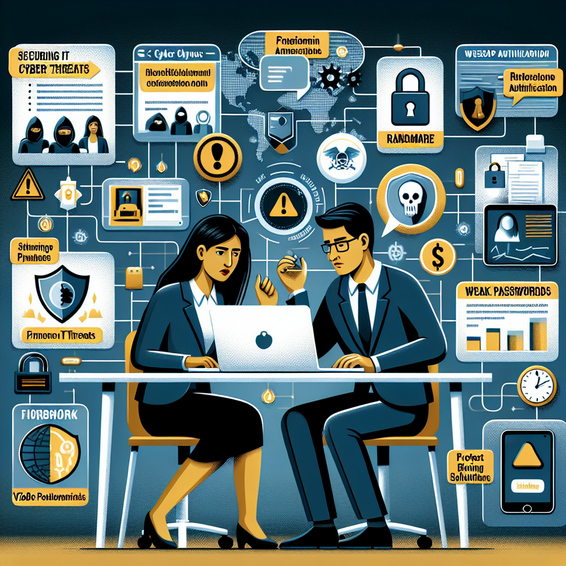Cyberattacks remain one of the most persistent threats facing modern businesses. From ransomware to advanced phishing campaigns, attackers are constantly refining their tactics to breach defenses and exploit organizations’ most valuable assets—data and reputation. With the stakes higher than ever, safeguarding your business against cyberattacks isn’t just the IT team’s job; it’s a whole-organization mandate.
Key Lessons Learned from Recent Cyberattacks
There’s no such thing as a small breach anymore. The ripple effects of even a minor cyber incident can stress-test your entire operation, eroding customer trust and incurring lasting financial damage. Some of the major lessons learned include:
- Attackers target the weakest link: Whether it’s an unpatched server or a poorly-trained end user, adversaries will always gravitate toward your soft spots.
- Ransomware is indiscriminate: Every industry is a target. Even organizations outside finance or healthcare are getting hit, often via third-party supply chain vulnerabilities.
- Recovery matters as much as prevention: Downtime and data loss are nearly inevitable after a breach, so disaster recovery planning and regular, secure backups are non-negotiable.
The impact stretches beyond IT. Reputational harm, lost business, regulatory fines, and legal actions can linger for years. Businesses are realizing that a cohesive strategy—including ongoing employee training and executive engagement—is crucial. Strategic investment in best practices pays off across the board. For more insights, check out our post on essential security strategies.
The Real Impact of Cyberattacks on Organizations and the Industry
Cyberattacks push organizations into crisis mode at lightning speed and leave lasting consequences. Industry-wide, the cost of cybercrime keeps climbing, forcing everyone from SMBs to global enterprises to rethink their approach. Organizations report:
- A loss of consumer confidence with every high-profile breach.
- Growing insurance premiums and stricter regulatory scrutiny.
- A need for continual investment in cybersecurity technologies and skilled teams.
- Increasing board-level visibility and accountability for security outcomes.
The IT industry as a whole is responding with more advanced threat detection, response automation, and a shift toward a proactive security culture. Organizations that adapt quickly see not just a reduction in risk, but improved operational resilience and even competitive advantage. Visit our AI in Security category for examples of how AI is transforming defense tactics.
What IT Professionals Should Do: Concrete Steps and Effective Solutions
If you’re managing IT, you can’t afford to be reactive—take these strategic actions to mitigate, reduce impact, improve efficiency, and control costs:
- Prioritize regular patching and vulnerability management: Keep software, firmware, and all systems updated with the latest security patches.
- Implement robust multi-factor authentication (MFA): Reduce the risk of unauthorized access with enforced 2FA and strong credential management.
- Automate monitoring and response: Invest in real-time threat detection tools like SIEM (Security Information and Event Management) solutions and consider SOAR (Security Orchestration and Automated Response) for streamlined incident remediation.
- Test your backups—don’t just set and forget them: Schedule routine test restores and ensure backup data is segmented from production to defeat ransomware threats.
- Foster a security-first culture: Educate users with simulated phishing exercises and ongoing cyber-awareness training.
Look at best-in-class platforms like CrowdStrike, SentinelOne, or Microsoft Defender for endpoint detection and response, and align your solutions with frameworks like NIST or ISO 27001. For additional strategies, see our detailed post on backup best practices.
Conclusion: Resilience Through Proactive Security
No matter your size, investing in modern security solutions and building a culture of cyber vigilance isn’t optional. In today’s threat landscape, a tactical, proactive approach is what separates organizations that withstand attacks from those left picking up the pieces. Act now, optimize your defenses, and make security everyone’s business. For a breakdown of the latest security news, visit our Cyberattack updates page.
